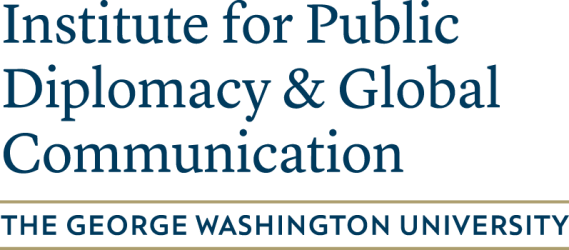Associated Press/Silicon Valley News, Telecommunications drawing investors in Afghanistan. “There are only 12,000 functioning telephones for nearly 2 million people in Kabul. And most calls never go through. The situation is worse in the provinces.”
Shazka Beyerle, “Net Effect,” Foreign Policy, July/August, 2002. Beyerle’s review of “the Middle East’s e-War.” Description and analysis of cyberactivism and conflict resolution websites. Links to numerous websites. (Also a separate link to NATO Press Chief Jamie Shea’s “top web picks.”)
Council on Foreign Relations Independent Task Force Report on Public Diplomacy. Council Chairman Peter G. Peterson’s article, “Public Diplomacy and the War on Terrorism,” adapted from “the Chairman’s preliminary summary of the report,” appears in the new September/October issue of Foreign Affairs, at pp. 74-94. The Executive Summary the full report, appendixes, and dissents are available on line at the Council’s website.
Diplo.edu. International network of institutions devoted to education, projects, news, resources, web management and technology tools for the creation and dissemination of information and knowledge for diplomacy and international relations.
Europemedia.Net. Tracks European Internet and new media developments on a pan-European level and country-by-country.
Tom Gelton. Pentagon Disinformation Debate from All Things Considered, July 19, 2002 Debate continues on the Pentagon’s Office of Strategic Influence. Supporters and critics have their say in this five-minute NPR segment.
Tony Judt. “Its Own Worst Enemy,” The New York Review of Books, August 15, 2002, pp. 12-17. Lengthy favorable review of Joseph Nye’s book The Paradox of American Power. Critique of U.S. unilateralism and assessment of European views on U.S. policies.
Jessica Mathews. “September 11, One Year Later: A World of Change,” Carnegie Endowment’s Special Edition, Policy Brief 18, August 20, 2002. Mathews looks at the effects of 9/11 on the economy, the environment, globalization, and the U.S. relationship with Russia, China, Central Asia, South Asia, the Middle East, and Europe. She also considers how future events and key policy choices will dictate the eventual significance of 9/11.
Siobhan McEvoy-Levy. American Exceptionalism and US Foreign Policy: Public Diplomacy at the End of the Cold War, St. Martins Press, 2001. Amazon.com comments: “This book examines . . . strategies and values employed in the public diplomacy of the Bush and Clinton Administrations to build domestic and international consensus . . . a model and an illustration for how rhetoric may be used in the study of United States foreign policy.”
Moises Naim. “The New Disapora,” Foreign Policy, July/August, 2002. FP editor Naim’s thoughts on new links between emigres and their home countries as a force in globalization.
Nua.com, 2002 Global Trends Report. 10% of the world’s population now has Internet access. For the first time, Europe has the highest number of Internet users, with 185.83m Europeans online compared to 182.83m in the US and Canada. The study also confirms no change in the digital divide. Full text of article on the Europemedia site.
NUA Internet Surveys. Online source on Internet demographics and trends. Nua’s “How Many Online?” link contains current estimates of global Internet user population, based on surveys and reports from around the world.
Public Diplomacy
Mark Leonard, with Catherine Stead and Conrad Smewing
The British Council, BBC World Service, Norway-UK
18th June 2002
The Foreign Policy Centre, directed by Mark Leonard, has issued a new report on public diplomacy in association with the British Council, BBC World Service, and Norway-UK. Joseph Nye’s Amazon reviewer’s comment: “First Rate.” Below is a summary from the Centre’s website (“Tony Blair’s think tank”).
PDC members will recall the roundtable with Mark Leonard hosted by the Public Diplomacy Institute at George Washington University last spring and a lively conversation on his research for this report.
In the world of al-Jazeera, global protest and mass democracy, building relationships with overseas publics can be as important as talking to governments. Whether countries build an international coalition against al-Qaida, reform the Common Agricultural Policy, or attract inward investment, influencing public opinion abroad will be crucial. What should our strategy for success be in this global competition for exports, tourism, investment and political influence? How can governments harness the power of NGOs, brands, diasporas and political parties to project a modern image? What lessons emerged from public diplomacy after September 11? The report sets out a practical agenda for public diplomacy which draws on fieldwork in six countries, hundreds of interviews with practitioners, and contributions from the experts in academia and communications – from Harvard academic Joseph Nye to Downing Street spokesman Alistair Campbell.
